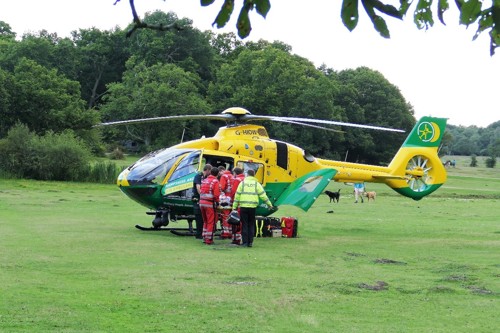 Images courtesy of the Hampshire & Isle of Wight Air Ambulance
Images courtesy of the Hampshire & Isle of Wight Air Ambulance
We’re pleased to have collaborated with the South Central Ambulance Service (SCAS) with this expert advice about responding to emergency vehicles in a safe manner.
When might an air ambulance helicopter be dispatched?
An air ambulance may be dispatched for any of the following reasons:
- The nature or severity of the medical emergency, where additional specialist clinical skills may be needed from emergency doctors and enhanced care paramedics
- The location of the incident also plays a key factor – for example, rural areas where access for road ambulances and other emergency vehicles is limited
- The emergency services have to consider the availability of ambulance service resources within the area at the time of the 999 call.
How can I assist the air ambulance?
After calling the emergency services, it’s best to secure your horses or any other loose animals, safely as far away from the scene as possible. As with most animals, horses are likely to be spooked by the noises made by vehicles and especially noise and downdraft created by a helicopter.
It’s really helpful to the air ambulance crew if you think there’s a suitable landing site at your location that you can clear of people, animals and obstructions.
The pilot may fly over or around the location more than once to identify a safe landing site and may not land where you expect. This is standard procedure and the pilot will decide the most appropriate landing site based on a number of factors.
Please don’t try to assist the crew with direction or marshalling when they’re trying to land. This can hinder the pilot’s ability land safely, as members of the public will become an additional hazard to contend with. You can help by making sure people at or near the incident are kept away from the centre of any large area that can be used to land a helicopter.
Top tips from the BHS and SCAS:
- Where possible, keep other people and animals away from the landing site
- Don’t approach the aircraft without clear directions to do so from the crew
- Don’t help the crew without direct instructions
- Don’t help load/unload the patient without a request from the crew
- Don’t help the crew with opening or closing the doors
- Be prepared to control access to the landing site under direction from the crew in preparation for helicopter departure.
